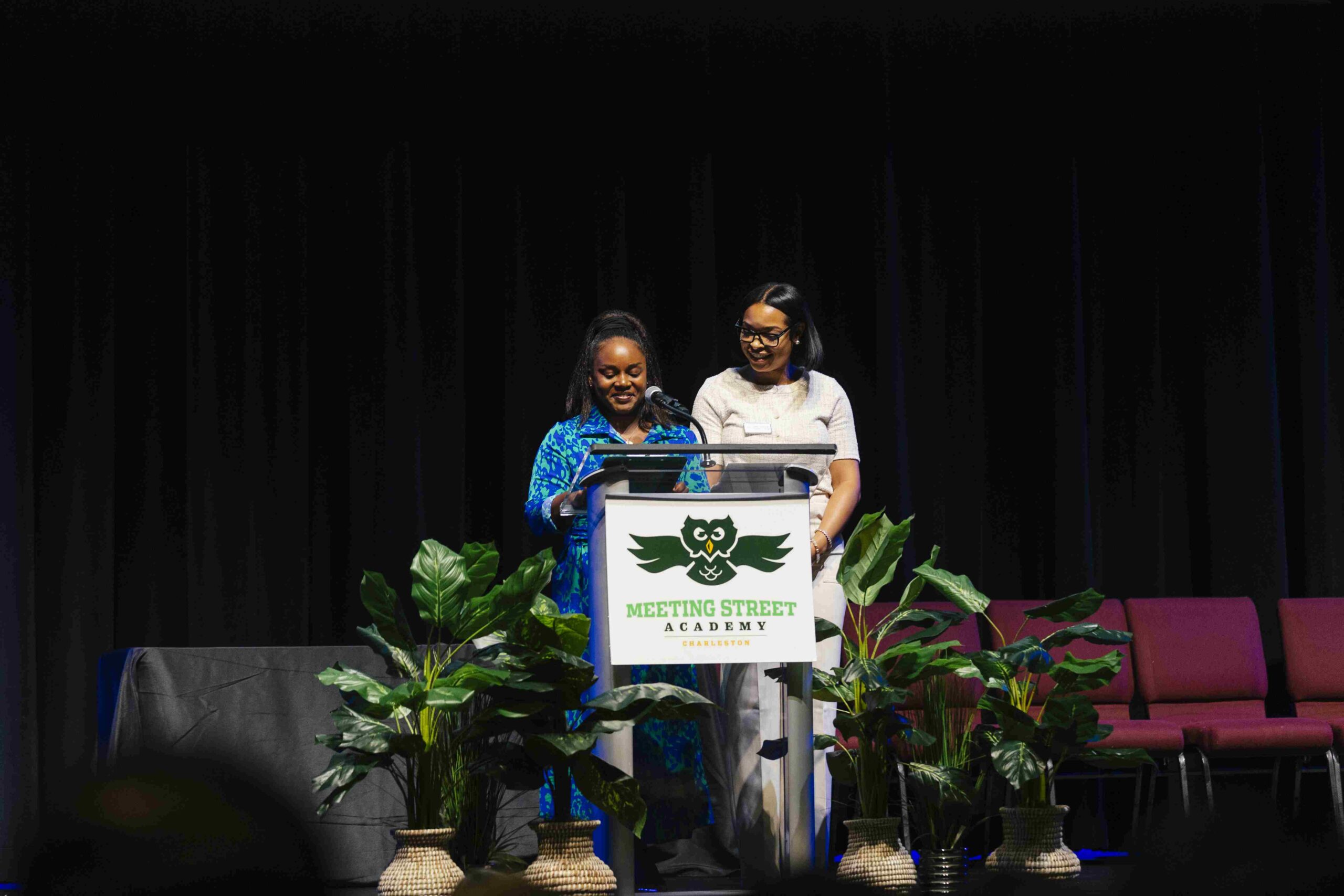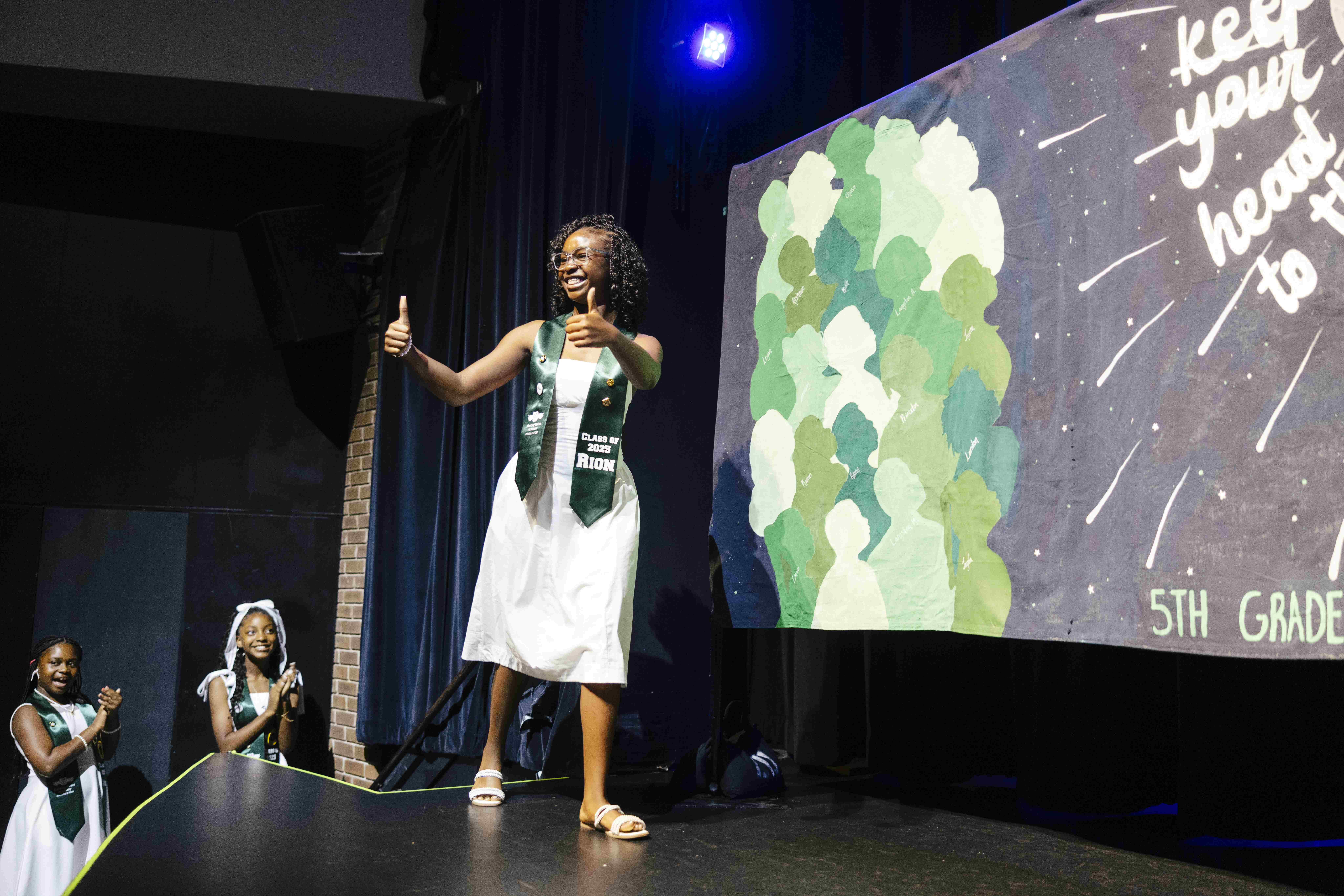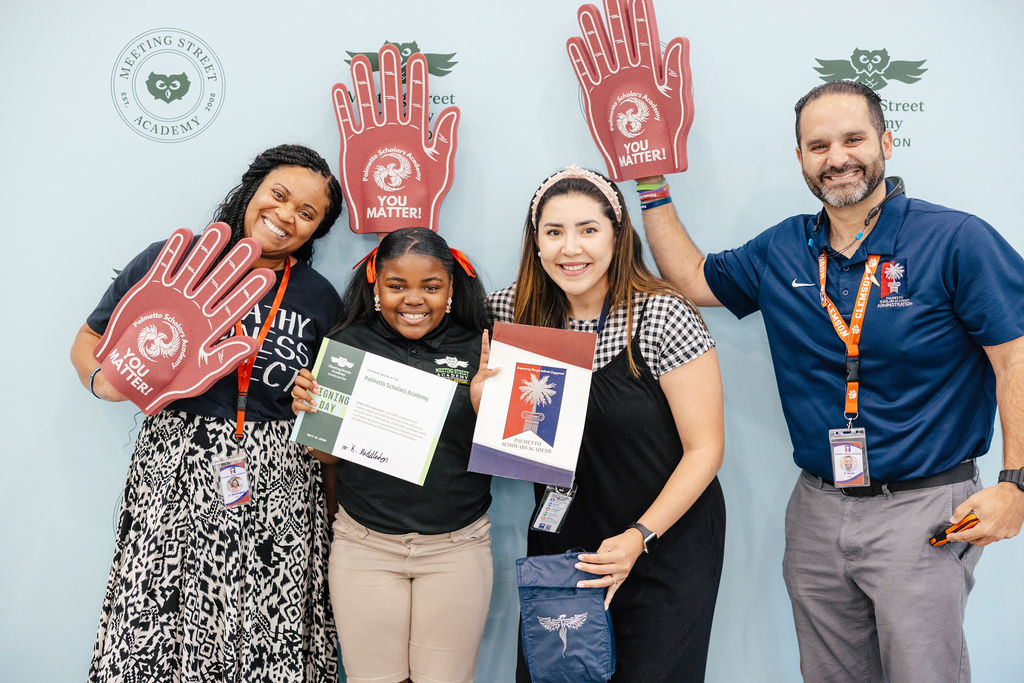By Seanna Adcox, The Post and Courier
COLUMBIA — A proposal allowing more “schools of innovation” in South Carolina is aimed at reproducing the successes of a public-private partnership started in Charleston five years ago, though teachers who oppose the idea see it as a path toward outright privatization.
One provision of House Speaker Jay Lucas’ massive proposal for transforming the state’s subpar K-12 system specifies that multiple public schools per district can get waivers from state laws and regulations as a way of providing “new, innovative, and more flexible ways of educating children.”
“This seems to be a way to privatize public schools instead of giving schools resources to improve,” the teachers’ advocacy group SC for Ed wrote to its 21,000 members.
Calls for reforming education intensified in the wake of The Post and Courier’s Minimally Adequate series in November, which laid out how gaping disparities have left students unprepared for college or work after high school, particularly in high-poverty schools.
But SC for Ed is pushing back hard against the bill Lucas introduced last month, insisting it lacks a “single passable section.”
State law, however, already allows school boards to create “schools of innovation.” It’s how Sherman Financial founder Ben Navarro launched the public-private concept at Meeting Street Elementary @ Brentwood, which opened in 2014 in a former North Charleston middle school known for its discipline problems, high turnover and horrendously low test results. The initiative spread to Spartanburg in 2016 and a second high-poverty elementary school in North Charleston last year.
All three are neighborhood public schools given millions of dollars in extra support from the charity that runs them.
But the attorney general’s office has interpreted the seven-year-old law as allowing only one such school per district. Lucas’ proposal would remove that inferred limit. Unlike charter schools, schools of innovation are created by the local district, and plans must receive supermajority approval of the school board, as well as approval by the state Board of Education.
Navarro, a billionaire appalled by the failings of South Carolina’s education system, is spending millions of his own money to prove students in generational poverty can be just as successful in the classroom as their more affluent peers.
“If the county could duplicate what Ben Navarro has done, we would be far better off,” said Dot Scott, president of the NAACP’s Charleston branch, which thanked Navarro with an education award two years ago. “Ben is my hero. I need some more heroes around the issue of educating all of these children.”
But she remains wary of endeavors by anyone other than Navarro, saying “everybody’s motivation is not going to be like Ben’s.”
Navarro hopes the Meeting Street model is replicated statewide.
“When I started this project, we weren’t positive that poverty was something you could overcome in education — and it certainly offers unique challenges — but today I’m positive. I am positive we can materially close that achievement gap because we are doing it,” Navarro said. “The model’s here — a model where people can come and see and say, ‘Wow! Look what’s possible for these students!’ That’s one of the key reasons we exist.”
What is the model?
SC for Ed’s opposition is partly over concerns that “schools of innovation” will cherry-pick students — based on certain criteria such as grades — making situations worse for those left behind in failing schools, said Lisa Ellis, who founded the group on Facebook last year.
But that’s not what’s happening at Navarro’s schools. Like any traditional neighborhood public school, the three Meeting Street schools that partner with their school district take every child in their attendance zone. Their students still take state-mandated tests. And the district provides the same amount of money it would ordinarily spend on the schools.
But they operate independently from the districts. They are not bound by state or district mandates on how their money’s spent. And their principals make their own hiring and firing decisions — something Navarro considers key to a school’s success.
In Meeting Street schools, each classroom has two teachers. Generally, an inexperienced teacher is paired with a veteran teacher, dropping the average student-to-teacher ratio to 12:1 and providing new teachers an in-classroom mentor. The national average is 16:1, according to the latest federal statistics.
“That is the greatest thing Meeting Street is doing” to foster great instruction, said Barbara Hairfield, a Charleston County School District curriculum specialist and former social studies teacher.
Teaching “is one of the loneliest professions in the world. Although you’re surrounded by kids all day long — it’s constant, nonstop — as a teacher, you are alone. Adults do not learn that way,” and a few scattered training days don’t help, said Hairfield, also a longtime member of the state Education Oversight Committee. “It is daily apprenticeship with a master that is teaching you what to do. Those are the people who grow and thrive and stay.”
The Meeting Street model also involves a longer school day and year. Students attend from at least 7:30 a.m. to 3:30 p.m., and the schools offer a two-hour extension, which includes dinner. The vast majority of students stay. They get to pick from activities ranging from soccer to singing, which help address what Navarro calls the “access challenge.”
Through clubs, students can take art, music and dance lessons akin to the paid classes poor parents simply can’t afford, said Sarah Campbell, principal at Brentwood, Charleston’s first innovation school, which added fifth grade this year.
Beyond the extended learning benefits, the clubs boost her students’ chances of attending Charleston County School of the Arts, a top-notch sixth-through-12th-grade public school in North Charleston where entry is based on auditions.
Each school offers dental checkups, vision screenings and full-time counselors. Brentwood also offers parents the convenience of an on-site medical clinic.
School starts younger at Meeting Street Schools too, with full-day programs for 3-year-olds.
“Do all kids need to go to school at 3? No. Do under-resourced kids need to go to school at 3 years old? Yes,” Navarro recently told the state Education Oversight Committee.
More money?
The nonprofit that runs the Meeting Street Schools adds millions to what the districts provide. At Brentwood, it equates to $599 additional per student yearly for 4-year-olds through fifth-graders. For 3-year-olds, the charity funds the entire annual cost of $15,913 per child.
It’s not all Navarro’s money. Contributing businesses include Boeing, which has donated more than $1 million to Brentwood since 2015. The company with a plant in North Charleston considers it an investment in its future workforce and hopes more students statewide can benefit.
“The school’s success proves that an innovative model focused on children excelling works regardless of geographic location or socioeconomic status,” said Lindsay Leonard, Boeing’s senior director of national strategy and engagement, who sits on Meeting Street’s board.
The $599 per child extra that Meeting Street’s spending happens to be roughly the same amount legislators are short-changing the state’s main funding formula for public schools, as per calculations under a 1977 law that are adjusted yearly for inflation.
Scores of additional formulas have been tacked on over the years. The state Revenue and Fiscal Affairs Office is working on a way to overhaul and simplify K-12 funding, as tasked earlier this year by Lucas, Senate President Harvey Peeler and Gov. Henry McMaster. A proposal is due in May.
But even with the extra money, Meeting Street schools spend less per student than Charleston County’s average of nearly $18,500.
Navarro and others caution his model won’t work simply by putting more money in the system. Success requires a new mindset that every child can succeed and the freedom to choose the best leaders and programs for each school, he said.
“Our focus and mission is 100 percent about the kids. Unfortunately that doesn’t happen everywhere,” said Taylor Cardwell, a leading kindergarten teacher at Brentwood. “Everything is purposeful.”
Students are told they will graduate and go to college. They learn their teachers’ college chants, which they yell at Friday afternoon pep rallies attended by parents and grandparents. Their graduation years are posted on the cafeteria walls. Every grade, starting with 5-year-old kindergarten, visits a different South Carolina public college every year.
“We want them to experience and see what college is,” Campbell said.
Students also learn civility. In the cafeteria on the first day of school, they’re told being “college ready” requires having high expectations for themselves: No slouching, no sleeping, no talking, no squirming.
A recent visit to the school found first-graders practicing politeness, turning to each other and repeating, “I’m sorry” and “Can you please stop?”
Teacher salaries
If only public schools statewide operated like Meeting Street schools, “a lot of your problems could be solved,” Ellis said.
SC for Ed is seeking at least a 10 percent pay raise from legislators next school year. They want smaller class sizes and freedom from bureaucracy that hinders their ability to teach.
But SC for Ed strongly opposes anything seen as eroding teacher protections, something Meeting Street teachers lack. They know they can lose their jobs without recourse, though Campbell says she’s never fired anyone mid-year.
And yet, at a time when public schools statewide are struggling just to fill vacancies amid a growing teacher shortage crisis, Meeting Street schools received 2,000 applications last year for 55 spots at its four campuses.
Interviews continue year-round. This year, Brentwood retained 95 percent of its teachers, Campbell said.
Teachers’ salaries at Meeting Street’s partnership schools are aligned to their districts’, though adjustments for the extra hours and days amount to roughly 8 percent more. Teachers can also earn bonuses, including $10,000 for staying five years.
In his December presentation to the Education Oversight Committee, Navarro stressed the system — not teachers — is to blame for the state’s bottom-in-the-nation rankings. And he urged legislators to make bold moves and stick by them. The state cannot thrive when the overwhelming majority of students in high-poverty schools can’t read well or do basic math, he said.
“The fact any of us can sleep at night, it’s sick. It’s so past unacceptable. The idea of anyone protecting the status quo is insanity because the status quo is a train wreck,” he told the committee of legislators and educators. “So let’s start changing things.”



